Recent Posts
Dealing with Winter Weather | SERVPRO of Jefferson City
2/28/2025 (Permalink)
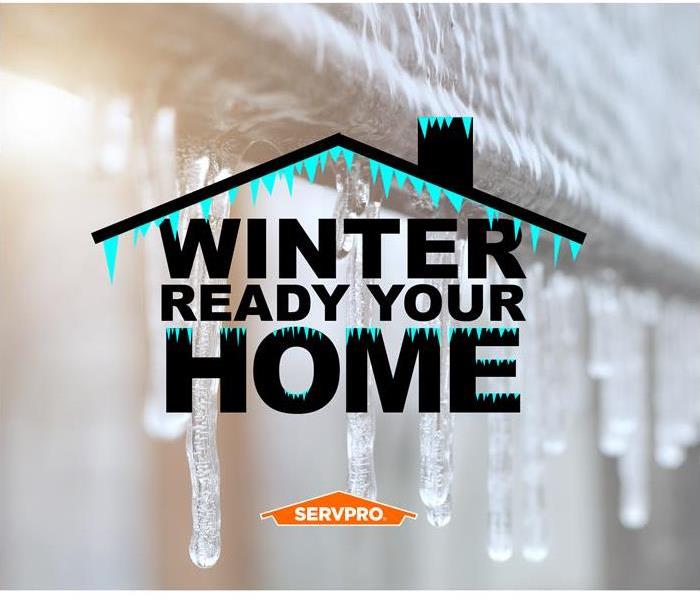 Trust SERVPRO of Jefferson City with all your winter weather damage
Trust SERVPRO of Jefferson City with all your winter weather damage
Winter weather in Jefferson City, Missouri can be both beautiful and brutal. While a fresh snowfall can create a picturesque scene, the reality of winter conditions brings challenges that homeowners and businesses must prepare for. At SERVPRO of Jefferson City, we understand the risks that come with freezing temperatures, snowstorms, and icy conditions. From property damage to safety hazards, winter presents unique challenges, but with the right knowledge and preparation, you can mitigate the risks and protect your home and business.
Understanding the Risks of Winter Weather
Winter storms and freezing temperatures can cause significant damage, including:
Frozen and burst pipes: When water freezes inside pipes, it expands and can cause the pipes to burst, leading to costly water damage.
Roof damage: Heavy snow accumulation can put excessive weight on your roof, leading to potential collapse or leaks.
Ice dams: Ice dams form when heat from the house melts the snow on the roof, which then refreezes at the eaves, preventing proper drainage and causing water to seep into your home.
Slips and falls: Icy walkways and driveways increase the risk of injuries to residents, employees, and visitors.
Power outages: Winter storms often lead to downed power lines, leaving homes and businesses without heat or electricity.
Preventative Measures to Take Before Winter Strikes
At SERVPRO of Jefferson City, we believe preparation is the key to minimizing damage. Here are essential steps you can take to protect your property:
1. Protect Your Pipes
Insulate exposed pipes in unheated areas, such as basements, attics, garages, and crawl spaces.
Allow faucets to drip slightly during extreme cold to keep water moving and prevent freezing.
Keep cabinet doors open under sinks to allow warm air to circulate around the pipes.
If you plan to be away, set your thermostat to at least 60°F to prevent freezing.
2. Maintain Your Roof
Remove snow accumulation from your roof using a roof rake to prevent excessive weight and ice dams.
Ensure gutters are clean and free of debris to promote proper drainage.
Inspect the attic for proper insulation and ventilation to prevent heat from escaping and melting snow unevenly.
3. Winterize Your Home Exterior
Seal cracks and gaps around windows and doors to prevent drafts and reduce heating costs.
Trim tree branches near your home to prevent them from breaking under the weight of snow and ice.
Store outdoor furniture and cover air conditioning units to prevent weather-related damage.
4. Prepare for Power Outages
Have a backup power source, such as a generator, in case of prolonged outages.
Keep flashlights, batteries, and extra blankets easily accessible.
Stock up on non-perishable food, bottled water, and necessary medications.
What to Do If Winter Weather Causes Damage
Even with the best preparation, winter storms can still lead to property damage. If your home or business suffers from water, fire, or structural damage due to winter weather, SERVPRO of Jefferson City is here to help. Our highly trained professionals are available 24/7 to provide emergency restoration services, including:
1. Water Damage Restoration
If a burst pipe or ice dam causes water damage, immediate action is crucial to prevent mold growth and structural damage. Our team utilizes advanced drying equipment and techniques to restore your property quickly.
2. Fire Damage Restoration
Winter often leads to an increase in fire-related incidents due to heating system malfunctions, space heater misuse, and chimney fires. Our fire restoration services include soot and smoke removal, structural repairs, and content restoration.
3. Mold Remediation
Excess moisture from winter storms and leaks can lead to mold growth. SERVPRO professionals are trained to identify and safely remove mold to prevent health hazards and further damage.
4. Storm Damage Repair
From collapsed roofs to fallen trees, winter storms can cause extensive damage. Our storm damage repair services include board-up and tarping, structural repairs, and debris removal.
Why Choose SERVPRO of Jefferson City?
When disaster strikes, you need a reliable and experienced team to restore your property quickly and efficiently. Here’s why Jefferson City residents and business owners trust SERVPRO:
24/7 Emergency Response: We understand that disasters don’t wait for business hours. Our team is available around the clock to respond to emergencies.
Highly Trained Professionals: Our technicians are certified in water, fire, and mold restoration, ensuring top-quality service.
Advanced Equipment and Techniques: We use industry-leading technology to provide efficient and effective restoration services.
Locally Owned and Operated: As part of the Jefferson City community, we care about our neighbors and are committed to providing excellent service.
Final Thoughts
Winter weather can be unpredictable, but with the right precautions and a trusted restoration partner, you can protect your home and business from the season’s harsh effects. By following preventative measures and knowing who to call in case of an emergency, you can ensure a safer winter for you and your loved ones. If winter weather causes damage to your property, don’t hesitate to contact SERVPRO of Jefferson City—we’re always here to help make it “Like it never even happened.”
Top 5 Household Areas Prone to Mold Growth and How to Prevent It
1/2/2025 (Permalink)
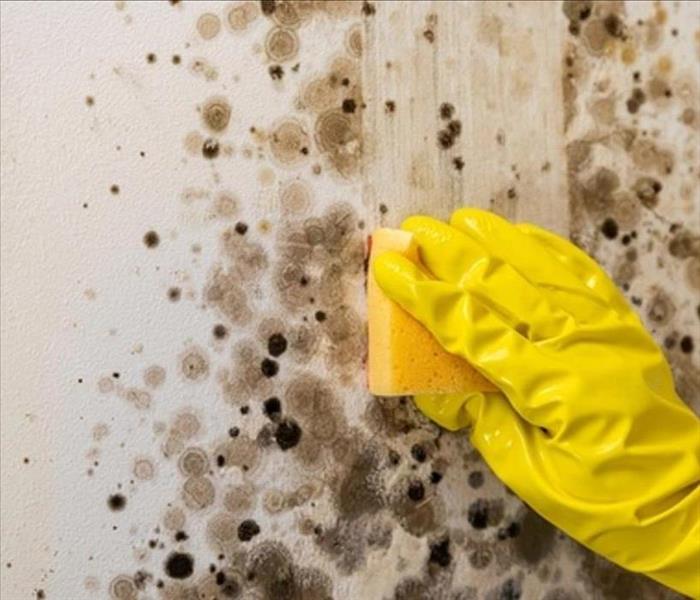 SERVPRO of Jefferson City can help with mold growth in your home
SERVPRO of Jefferson City can help with mold growth in your home
SERVPRO of Jefferson City deals with mold damage in many different areas of the home. Mold growth is a common problem in many households, posing risks to both property and health. Mold thrives in damp, dark, and humid environments, often going unnoticed until it becomes a significant issue. Knowing where mold is most likely to grow can help you take preventative measures. Here are the top five household areas prone to mold growth and tips to prevent it.
1. Bathrooms
Bathrooms are a prime location for mold due to high humidity levels from showers, baths, and sinks. Moisture can accumulate on walls, ceilings, and tiles, providing the perfect conditions for mold to thrive.
Common Mold Hotspots:
Prevention Tips:
Use an exhaust fan or open a window during and after showers to reduce humidity.
Regularly clean and dry shower surfaces and curtains.
Fix any leaky faucets or pipes immediately.
Use mold-resistant paint and materials in bathroom renovations.
2. Kitchens
Kitchens also see frequent moisture from cooking, dishwashing, and refrigerator condensation. Leftover food crumbs and organic materials add to the problem, providing nutrients for mold.
Common Mold Hotspots:
Prevention Tips:
Wipe down surfaces regularly and clean up spills promptly.
Use a dehumidifier or exhaust fan to reduce humidity during cooking.
Check for leaks in plumbing and around appliances.
Empty and clean trash bins frequently.
3. Basements
Basements are notorious for mold growth due to their dark, damp conditions and proximity to the ground. Poor ventilation and occasional flooding make them especially vulnerable.
Common Mold Hotspots:
Walls and floors, particularly concrete
Around water heaters and HVAC systems
Stored items, especially cardboard boxes and fabrics
Prevention Tips:
Install a dehumidifier to maintain low humidity levels.
Seal foundation cracks and ensure proper drainage away from the home.
Elevate stored items off the floor and use plastic bins instead of cardboard.
Insulate pipes to prevent condensation.
4. Attics
Mold in attics often results from poor ventilation or roof leaks. Warm air from the home rises and condenses in the cooler attic space, creating moisture that can lead to mold.
Common Mold Hotspots:
Prevention Tips:
Ensure proper ventilation with vents or fans.
Inspect the roof regularly for leaks or damaged shingles.
Install proper insulation to prevent condensation.
Check and clean attic vents to keep airflow unobstructed.
5. Laundry Rooms
Laundry rooms are often warm and humid, especially if there’s inadequate ventilation. Washing machines, particularly front-loading models, can trap moisture and become breeding grounds for mold.
Common Mold Hotspots:
Prevention Tips:
Leave washing machine doors open after use to allow drying.
Clean washing machine seals and dispensers regularly.
Vent dryers properly to the outside of the home.
Fix any leaks promptly and wipe down wet surfaces.
Conclusion
Understanding where mold is most likely to grow in your home is the first step to preventing it. By addressing these high-risk areas with proper maintenance and preventative measures, you can significantly reduce the likelihood of mold growth and protect your family’s health and your property. If mold does appear, act quickly to clean it or seek professional remediation services to prevent further damage.
Restoring Your Home Or Business After Smoke Damage | SERVPRO of Jefferson City
10/31/2024 (Permalink)
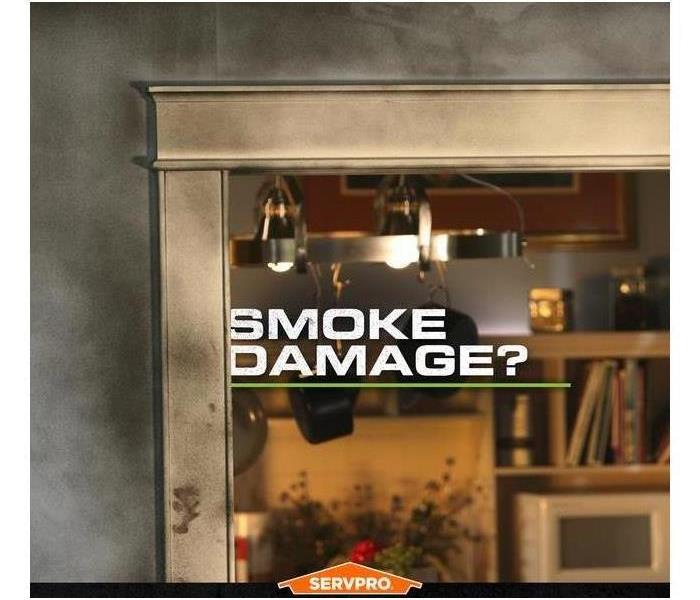 SERVPRO of Jefferson City is here to help restore your smoke damaged property
SERVPRO of Jefferson City is here to help restore your smoke damaged property
Smoke damage can be a challenging and emotional experience for home and business owners alike. Beyond the obvious visual damage, smoke particles can embed themselves in various materials, leaving lingering odors and compromising indoor air quality. SERVPRO of Jefferson City is trained to address these challenges effectively, bringing your space back to a safe, comfortable, and clean environment.
1. Initial Inspection and Assessment
The first step SERVPRO of Jefferson City takes when dealing with a property affected by smoke damage is a comprehensive inspection. Our technicians assess the severity of the smoke damage, identify areas most impacted, and determine the type of smoke residue involved. We also look for any structural damage that could complicate the restoration process. This initial evaluation is critical, as it allows SERVPRO to create a customized plan suited to the specific needs of each home or business.
Types of Smoke Residue
- Dry Smoke: Results from fast-burning, high-temperature fires. Leaves a powdery residue.
- Wet Smoke: From low-heat, smoldering fires. Often sticky and difficult to clean.
- Protein Residue: From cooking-related fires, often leaves a strong odor and can discolor surfaces.
- Fuel/Oil Residue: Less common in residential fires, usually found in commercial or industrial settings.
Each type of residue requires a different cleaning approach, making the assessment phase crucial.
2. Setting Up Safety Protocols
Smoke and soot can be hazardous if not handled properly. SERVPRO teams are trained in occupational safety and follow strict guidelines to protect themselves and property owners. This includes wearing appropriate personal protective equipment (PPE), isolating affected areas when possible, and using specialized ventilation techniques to reduce smoke particle levels during cleanup.
3. Odor Removal and Air Purification
One of the most challenging aspects of smoke damage is removing the persistent odor. SERVPRO of Jefferson City uses advanced odor removal technology and industrial-grade air purifiers to eliminate smoke particles from the air. This often includes:
- Thermal Fogging: A technique that releases a deodorizing fog into the affected area, neutralizing smoke odors at a molecular level.
- Ozone Treatments: These machines generate ozone, which reacts with and neutralizes smoke particles in the air.
- Air Scrubbers: High-efficiency particulate air (HEPA) filters capture smoke particles, improving indoor air quality.
4. Deep Cleaning and Soot Removal
SERVPRO’s technicians use specialized tools and methods to clean and restore surfaces affected by soot. Some techniques we employ include:
- Dry Sponging: For lighter soot layers, SERVPRO uses special dry sponges that lift soot without spreading it.
- Wet Cleaning Solutions: For heavier residues, wet cleaning solutions may be used to break down and remove oily residues left by smoke.
SERVPRO understands that each type of surface requires unique handling to prevent further damage. Porous surfaces may need deep cleaning, while non-porous surfaces might require less intensive treatments.
5. Structural Cleaning and Repair
After the surface soot and smoke have been cleared, SERVPRO teams conduct structural cleaning. Smoke damage can often penetrate deep into the building’s structure, which can lead to significant issues if not addressed:
- Wall and Ceiling Restoration: Using methods like chemical sponges or high-powered vacuums, SERVPRO can clean and restore most wall and ceiling types.
- Cabinet and Furniture Cleaning: Items like cabinets and upholstered furniture often need special treatment due to their porous nature.
- Replacement of Damaged Materials: In cases where materials are too heavily damaged by smoke, SERVPRO can remove and replace these elements, from drywall to insulation, to ensure safety and longevity.
6. Documentation for Insurance Claims
SERVPRO of Jefferson City assists customers by thoroughly documenting the smoke damage and restoration work. This includes:
- Detailed logs and photographs of affected areas.
- Step-by-step breakdowns of the restoration work.
- Documentation to support insurance claims, helping clients get the most out of their policies.
7. Final Inspection and Restoration Verification
Once the cleaning and restoration processes are complete, SERVPRO of Jefferson City conducts a final inspection. This ensures that all smoke damage has been addressed, including odor removal and deep cleaning. Technicians check each area for residual smoke particles, lingering odors, and soot.
Restoring Peace of Mind
With our expertise and resources, SERVPRO of Jefferson City can help you recover from smoke damage, bringing your space back to a safe, comfortable, and clean state.
The True Cost of Water Damage: Understanding Insurance and Restoration Expenses | SERVPRO of Jefferson City
9/11/2024 (Permalink)
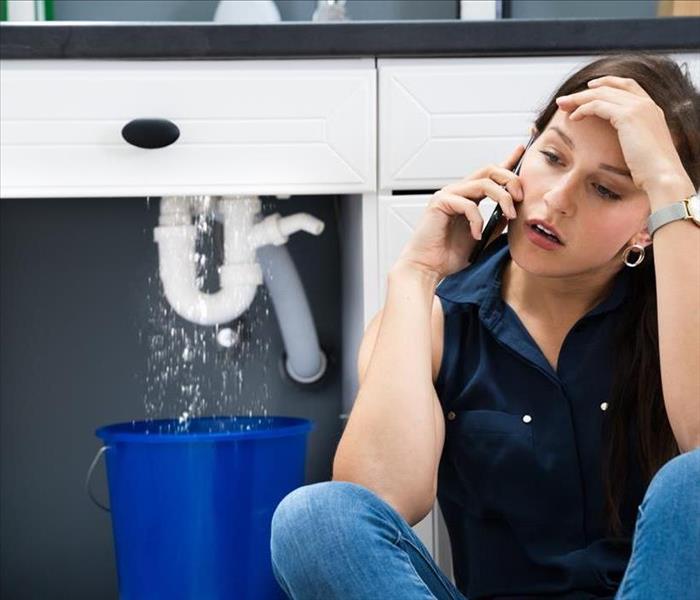 Water damage can be devastating. SERVPRO of Jefferson City is here to help restore and repair.
Water damage can be devastating. SERVPRO of Jefferson City is here to help restore and repair.
Water damage is one of the most common and costly problems homeowners face. Whether it’s caused by a burst pipe, a leaky roof, or a natural disaster, water damage can lead to significant property loss, long-term structural issues, and health hazards like mold growth. While the immediate priority after water damage occurs is stopping the source of the problem and minimizing further damage, one of the biggest concerns for homeowners is the cost of restoration and the role insurance plays in covering those expenses.
Understanding the true cost of water damage and navigating the complexities of insurance claims can be overwhelming. In this post, we'll break down the typical costs involved in water damage restoration and how homeowners can manage their insurance claims to ensure they receive the compensation they need.
The Immediate Financial Impact of Water Damage
When water damage occurs, the cost of restoration can vary widely depending on the severity and extent of the damage. In the initial stages, homeowners are primarily concerned with stopping the source of the water and preventing further damage, but even this initial response can come with costs:
Water Removal: If you’re dealing with a significant water incident, you’ll likely need professional water extraction. Industrial pumps, vacuums, and other equipment are often required to remove large amounts of water, which can cost between $500 and $1,500 depending on the amount of water and size of the affected area.
Drying and Dehumidifying: Once the water is removed, professionals will need to dry the affected areas to prevent further damage and mold growth. High-powered air movers and dehumidifiers are used for this, with the average cost ranging from $1,000 to $3,000. This can increase if the water has seeped into hard-to-reach areas, such as behind walls or under flooring.
Sanitizing and Cleaning: Depending on the type of water (clean water, gray water, or black water), the cost of cleaning can vary. For example, if your water damage is from a contaminated source like a sewage backup, cleaning costs can rise significantly due to the need for specialized cleaning agents and safety precautions. These services can range from $500 to $2,000.
Mold Remediation: If water damage is not addressed quickly, mold can begin to form within 24 to 48 hours. Mold removal and remediation can be particularly expensive, costing anywhere from $500 to $6,000 or more, depending on the size of the infestation.
These are just the immediate costs of addressing water damage, but there are often additional hidden expenses that can escalate the total restoration cost.
Hidden Costs of Water Damage
Beyond the visible damage, water can cause long-term structural issues that may not be immediately apparent. For example:
Structural Damage: Water can weaken the foundation, warp wood beams, and damage drywall, which could lead to expensive structural repairs. The cost of repairing damaged walls, ceilings, and floors can range from $1,000 to $8,000 or more, depending on the extent of the damage.
Electrical Damage: Water can compromise your home’s electrical system, which poses a safety hazard and may require rewiring or replacement of electrical outlets, circuit breakers, or appliances. Repairing water-damaged electrical systems can cost anywhere from $1,000 to $10,000, depending on the complexity.
HVAC System: If water reaches your heating, ventilation, and air conditioning (HVAC) system, the costs of repairing or replacing damaged components can be significant, ranging from $2,000 to $10,000.
These additional costs are why water damage restoration can become such an expensive endeavor. To minimize these expenses, quick action is critical, but so is understanding how your insurance policy works in the event of water damage.
What Does Homeowners Insurance Cover?
The good news is that many homeowners insurance policies cover water damage, but there are important distinctions to be aware of. Understanding the differences between types of water damage and what your policy specifically covers can save you a lot of stress.
Covered Water Damage: Most standard homeowners insurance policies will cover water damage caused by sudden and accidental events. This can include things like:
- Burst pipes
- Accidental overflows (from appliances, toilets, etc.)
- Damage from roof leaks (provided the damage wasn’t caused by neglect)
- Storm damage, such as rainwater or wind-driven water entering the home due to damage caused by the storm.
Excluded Water Damage: However, many policies exclude certain types of water damage, especially if it’s due to neglect or lack of maintenance. Common exclusions include:
- Gradual leaks that were not addressed in a timely manner (e.g., a slow leak under a sink).
- Damage due to poor maintenance or old roofing.
- Sewer backups (unless you’ve specifically added this coverage).
- Flood damage (this requires separate flood insurance).
It’s important to read your policy carefully to understand what is and isn’t covered, and to consider adding additional coverage for things like sewer backups and floods, which are often excluded from standard policies.
Filing a Water Damage Insurance Claim
If your home has suffered water damage, filing an insurance claim can help you cover the costs of repairs and restoration, but the process can be complex. Here are the steps to follow:
Document the Damage: As soon as you notice water damage, take photos and videos of the affected areas. This documentation will be critical when you file your claim.
Contact Your Insurance Company: Notify your insurance company as soon as possible. Many companies have specific time frames in which you must report the damage to be eligible for coverage.
Mitigate Further Damage: Insurance policies generally require homeowners to take steps to prevent further damage. This might involve temporarily patching a roof or using tarps to cover damaged areas. Failing to do so could result in your claim being denied.
Get Professional Estimates: Once you’ve contacted your insurer, they may send out an adjuster to assess the damage. It’s also a good idea to get independent estimates from water damage restoration professionals to ensure that the adjuster’s estimate is accurate.
Work With Your Insurance Adjuster: The insurance adjuster will evaluate the damage and provide an estimate for repairs. Make sure you discuss all the areas of damage, including any hidden or long-term issues that might arise.
Keep Receipts and Invoices: Keep all documentation, including receipts for temporary repairs, invoices from contractors, and any other related expenses. You’ll need these when negotiating your final settlement.
How to Avoid Unexpected Out-of-Pocket Costs
Even with insurance, it’s common for homeowners to face unexpected out-of-pocket costs when dealing with water damage. Here’s how to minimize those expenses:
Review Your Deductible: Make sure you understand how much your deductible is. The deductible is the amount you’ll need to pay out of pocket before your insurance kicks in.
Ask About Depreciation: Some insurance policies only pay for the depreciated value of damaged items, rather than the cost to replace them. Make sure you know what type of coverage you have—Actual Cash Value (ACV) or Replacement Cost Value (RCV).
Consider Supplemental Insurance: If you live in an area prone to flooding, consider purchasing flood insurance. Similarly, if you’re worried about sewer backups, ask your insurer about adding that to your policy.
Conclusion
The true cost of water damage can be staggering, but with the right insurance policy and a clear understanding of the restoration process, you can minimize both your expenses and the stress involved. Being proactive about home maintenance, understanding your insurance coverage, and acting quickly in the event of water damage are all key to reducing both immediate and long-term costs.
While insurance can help offset many of the costs of water damage restoration, there can be out-of-pocket expenses that can catch homeowners off guard. By reviewing your policy carefully, ensuring you have the right coverage, and taking quick action when damage occurs, you’ll be better prepared to handle the financial impact of water damage.
Handling Damaged Documents | SERVPRO of Jefferson City
8/5/2024 (Permalink)
 SERVPRO of Jefferson City is here to help with document restoration
SERVPRO of Jefferson City is here to help with document restoration
In an era where information is crucial and records are invaluable, the preservation of documents after a disaster is essential. SERVPRO®, the leader in the restoration and cleaning industry, has developed a specialized approach to handling damaged documents. Let's explore how SERVPRO of Jefferson City manages this delicate task, ensuring that vital information is preserved and restored effectively.
Understanding the Importance of Document Restoration
Documents, whether they are business records, personal files, or historical archives, represent significant value. They can contain sensitive information, legal records, or sentimental value. When documents are damaged by water, fire, mold, or other disasters, their restoration becomes critical to avoid loss. SERVPRO of Jefferson City recognizes this importance and employs a meticulous process to restore documents to their original condition as much as possible.
The SERVPRO Process for Document Restoration
Assessment and Immediate Response
Upon receiving a call for document restoration, our first step is to assess the extent of damage. This assessment involves evaluating the type of damage (e.g., water, smoke, fire), the condition of the documents, and the urgency of the restoration process. An immediate response is crucial to prevent further deterioration.
SERVPRO's technicians are trained to handle a variety of document types, from paper and photographs to microfilm and electronic records. They begin by establishing a safe and controlled environment to prevent additional damage.
Inventory and Documentation
Before beginning the restoration process, SERVPRO conducts a thorough inventory of the damaged documents. This inventory includes cataloging each item, noting its condition, and documenting any specific requirements for restoration. This step ensures that nothing is overlooked and that each document can be tracked throughout the restoration process.
The documentation process also involves capturing details about the extent of damage, which helps in creating a restoration plan tailored to the specific needs of each document.
Drying and Decontamination
Water damage is one of the most common issues faced by documents, often resulting from flooding or leaks. SERVPRO uses advanced drying techniques to address this issue. The documents are carefully dried using specialized equipment, including air movers and dehumidifiers, designed to remove moisture without causing further harm.
In cases where documents have been exposed to contaminants or chemicals, SERVPRO employs decontamination methods. This process involves cleaning the documents with appropriate agents to remove any hazardous substances, ensuring that they are safe to handle and restore.
Freezing and Vacuum Freeze-Drying
When documents are severely water-damaged, immediate freezing is often the best solution to prevent mold growth and further deterioration. SERVPRO utilizes vacuum freeze-drying technology, a process where documents are first frozen and then placed in a vacuum chamber. Under vacuum conditions, the frozen water sublimates (turns directly from ice to vapor) without passing through a liquid phase, preserving the document’s structure.
This technique is particularly effective for paper documents, photographs, and other sensitive materials. The vacuum freeze-drying process helps maintain the integrity of the document while removing moisture in a controlled manner.
Cleaning and Restoration
After drying and decontamination, SERVPRO’s focus shifts to cleaning and restoring the documents. This step involves carefully removing any remaining debris, soot, or residues from fire and smoke damage. Specialized cleaning agents and techniques are used to avoid further damage.
SERVPRO’s restoration process also includes repairing any physical damage, such as tears or creases. Expert technicians use conservation techniques to mend and stabilize documents, ensuring that they can be handled and stored safely.
Digital Conversion and Preservation
In addition to physical restoration, SERVPRO offers digital conversion services. By scanning and digitizing documents, SERVPRO helps clients create electronic backups that are less susceptible to physical damage. Digital records also facilitate easier access and sharing of information.
This step is particularly valuable for businesses and institutions that need to maintain a digital archive of their important documents. Digital conversion ensures that even if the original documents are lost or further damaged, their content remains preserved and accessible.
Final Review and Quality Assurance
Once the restoration process is complete, SERVPRO conducts a final review of the documents to ensure that all restoration objectives have been met. Quality assurance checks include verifying the condition of the documents, assessing the effectiveness of the cleaning and repair work, and ensuring that all client requirements have been fulfilled.
Clients are provided with a detailed report outlining the restoration process, including any challenges encountered and how they were addressed. This transparency helps clients understand the work performed and the current state of their documents.
Reorganization and Return
After the documents have been restored and reviewed, SERVPRO assists in reorganizing and returning them to their original location or a designated area. This step involves careful handling to ensure that the documents are properly stored and protected from potential future damage.
For businesses and institutions, SERVPRO often works closely with the client to determine the best storage solutions, including archival storage options that offer enhanced protection against future risks.
Preventive Measures and Recommendations
In addition to restoration, SERVPRO provides valuable advice on preventive measures to minimize the risk of future damage. This includes recommendations for proper storage conditions, such as climate control and moisture management, as well as strategies for safeguarding documents against potential hazards.
SERVPRO also offers training and consultation services for clients to help them implement best practices for document preservation and disaster preparedness. This proactive approach helps clients reduce the likelihood of damage and ensures that they are better prepared to handle any future incidents.
Conclusion
SERVPRO’s comprehensive approach to document restoration underscores its commitment to preserving valuable information and records. From the initial assessment and drying process to digital conversion and preventive recommendations, SERVPRO employs a range of specialized techniques to address document damage effectively.
By leveraging advanced technology and expert knowledge, SERVPRO ensures that clients’ documents are restored to their original condition as much as possible. The meticulous process, combined with a focus on quality and client satisfaction, positions SERVPRO as a leader in the field of document restoration.
Whether dealing with water, fire, or mold damage, SERVPRO’s dedication to document preservation provides peace of mind for individuals and organizations alike. Through its expert handling and restoration services, SERVPRO of Jefferson City helps protect and recover the critical information that forms the backbone of our personal and professional lives.
The Commercial Cleaning Process | SERVPRO of Jefferson City
7/30/2024 (Permalink)
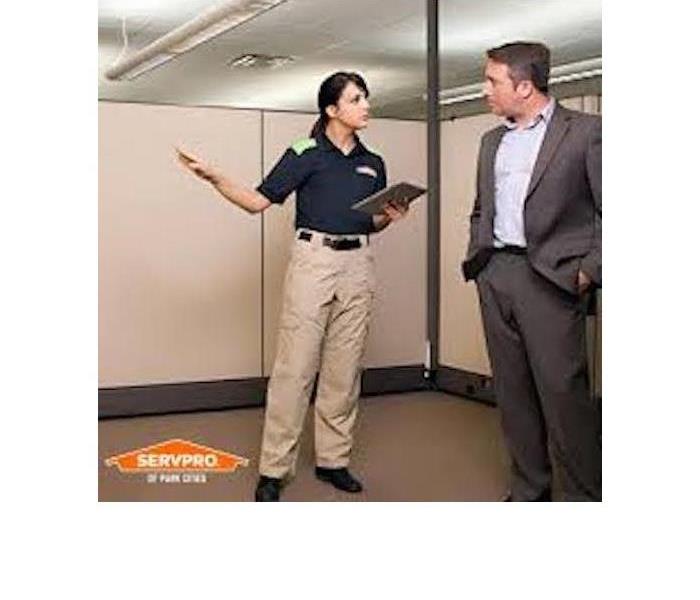 SERVPRO of Jefferson City is here to help with commercial cleaning and restoration
SERVPRO of Jefferson City is here to help with commercial cleaning and restoration
SERVPRO® of Jefferson City handles commercial cleaning jobs with a blend of professionalism, expertise, and advanced technology. Our approach to commercial cleaning is systematic and comprehensive, aimed at ensuring businesses can resume normal operations as quickly and efficiently as possible. Below is a detailed exploration of how we manage these tasks.
Initial Assessment and Inspection
The first step SERVPRO® takes when handling a commercial cleaning job is a thorough assessment and inspection of the premises. This is crucial for understanding the scope of the cleaning required and developing a tailored plan of action. The process begins with a detailed walkthrough of the facility, where our professionals evaluate the extent of contamination, damage, or dirt accumulation.
During this inspection, SERVPRO technicians look for specific issues such as:
- Extent of Damage: We identify areas affected by water, fire, mold, or other contaminants. This includes checking structural components, furnishings, and electronic equipment.
- Type of Contaminants: We determine the nature of the contaminants, whether biological (mold, bacteria), chemical, or physical (dust, debris).
- Safety Hazards: We assess any potential safety hazards, such as exposed electrical wiring or slippery floors, which need to be addressed to ensure the safety of both the cleaning crew and the occupants of the building.
This initial assessment helps SERVPRO develop a detailed and effective cleaning strategy, ensuring that all problem areas are addressed in a manner that minimizes disruption to business operations.
Customized Cleaning Plan
Based on the initial assessment, SERVPRO creates a customized cleaning plan designed to meet the specific needs of the commercial property. This plan includes:
- Scope of Work: Detailed descriptions of the tasks to be performed, including the areas to be cleaned, types of cleaning methods to be used, and any special considerations.
- Timeline: An estimated timeline for completion, which helps the business plan around the cleaning process to minimize operational disruptions.
- Resource Allocation: Identification of the necessary equipment and cleaning agents required for the job. This might include specialized machinery for carpet cleaning, industrial-grade vacuums, and antimicrobial solutions.
The customized plan is crucial for ensuring that the cleaning process is both efficient and effective, tailored to the unique needs of the commercial space.
Implementation of Cleaning Procedures
Once the plan is in place, SERVPRO proceeds with the implementation of the cleaning procedures. Our approach often involves the following steps:
Preparation:
- Site Setup: Setting up the work area with appropriate signage to inform occupants of the cleaning operations and ensure their safety.
- Protection: Using protective barriers and coverings to prevent damage to unaffected areas and ensure that cleaning agents do not interfere with other parts of the facility.
Deep Cleaning:
- Surface Cleaning: Cleaning and disinfecting high-touch surfaces such as door handles, countertops, and light switches. This is particularly important in preventing the spread of germs and ensuring a hygienic environment.
- Floor Care: Depending on the type of flooring (carpet, tile, wood, etc.), SERVPRO employs appropriate methods such as steam cleaning, vacuuming, or mopping. For carpets, we may use hot water extraction or low-moisture cleaning techniques to remove dirt and stains effectively.
- Upholstery and Furniture: Cleaning and sanitizing furniture and upholstery using specialized cleaning solutions and equipment designed to tackle different fabric types.
Air Duct and HVAC Cleaning:
- Inspection and Cleaning: SERVPRO inspects and cleans air ducts and HVAC systems to remove dust, debris, and contaminants. This is vital for maintaining air quality and preventing potential health issues related to poor ventilation.
Specialized Cleaning:
- Mold Remediation: If mold is identified, SERVPRO uses specialized techniques to remove mold spores and prevent future growth. This includes using HEPA filters, dehumidifiers, and antimicrobial treatments.
- Biohazard Cleanup: For facilities dealing with biological contaminants (e.g., sewage, bodily fluids), SERVPRO follows stringent protocols to safely and effectively clean and disinfect affected areas.
Final Inspection:
- Quality Check: After cleaning, SERVPRO performs a final inspection to ensure that all areas have been properly cleaned and meet our high standards. We also verify that no damage was caused during the cleaning process and address any remaining concerns.
Advanced Technology and Equipment
SERVPRO’s commitment to using advanced technology and equipment is a key factor in our success in handling commercial cleaning jobs. Our tools and machinery include:
- Industrial-Grade Equipment: High-capacity vacuums, air scrubbers, and dehumidifiers designed to handle large spaces and high levels of contamination.
- Specialized Cleaning Agents: Eco-friendly and effective cleaning solutions tailored to various surfaces and types of contamination.
- Advanced Detection Tools: Moisture meters, thermal imaging cameras, and other tools that help in detecting hidden moisture and assessing damage accurately.
These technologies enhance the efficiency and effectiveness of the cleaning process, ensuring that the facility is thoroughly cleaned and restored.
Adherence to Standards and Regulations
SERVPRO adheres to industry standards and regulations to ensure that our cleaning practices are both effective and compliant with safety and health guidelines. We follow protocols set by organizations such as:
- Institute of Inspection, Cleaning and Restoration Certification (IICRC): Ensuring that cleaning methods and techniques meet established industry standards.
- Occupational Safety and Health Administration (OSHA): Complying with safety regulations to protect workers and occupants.
- Environmental Protection Agency (EPA): Using EPA-approved cleaning agents and following guidelines for handling hazardous materials.
Compliance with these standards helps SERVPRO deliver reliable and high-quality cleaning services while maintaining safety and environmental responsibility.
Communication and Customer Service
Effective communication and customer service are central to our approach to commercial cleaning. We ensure:
- Regular Updates: Providing businesses with updates on the progress of the cleaning job and any issues encountered.
- Flexibility: Offering flexible scheduling options to accommodate the business’s needs and minimize operational disruptions.
- Customer Feedback: Encouraging feedback to address any concerns and continuously improve our services.
By maintaining open lines of communication and providing excellent customer service, SERVPRO builds strong relationships with our clients and ensures that their needs are met effectively.
Post-Cleaning Review and Documentation
After completing the cleaning job, SERVPRO conducts a post-cleaning review and provides documentation to the client. This includes:
- Final Report: A detailed report outlining the cleaning procedures performed, areas covered, and any issues encountered.
- Before and After Photos: Visual documentation showing the condition of the facility before and after cleaning, which helps in assessing the effectiveness of the cleaning and addressing any concerns.
This documentation serves as a record of the work done and can be useful for insurance purposes or future reference.
Conclusion
SERVPRO’s approach to handling commercial cleaning jobs is characterized by a meticulous, systematic process that ensures thorough and effective cleaning. From the initial assessment and customized cleaning plan to the implementation of advanced cleaning techniques and adherence to industry standards, SERVPRO demonstrates a commitment to quality and professionalism. Our use of advanced technology, emphasis on safety, and focus on customer service further enhance our ability to meet the diverse needs of commercial clients. Through our comprehensive and client-centric approach, SERVPRO helps businesses restore their facilities to a clean and safe condition, enabling them to resume their operations with minimal disruption.
A Comprehensive Approach to Fire Damage Restoration | SERVPRO of Jefferson City
5/23/2024 (Permalink)
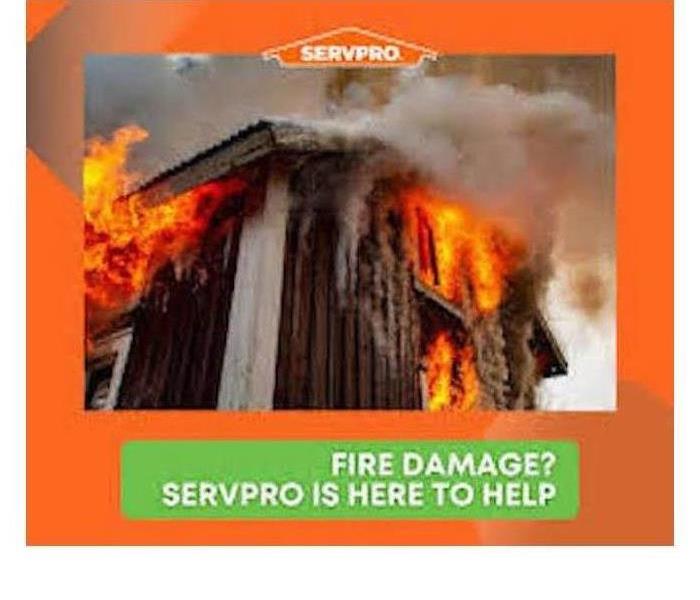 Trust SERVPRO of Jefferson City's comprehensive approach to fire damage restoration
Trust SERVPRO of Jefferson City's comprehensive approach to fire damage restoration
In the wake of a fire damage event, the physical devastation left behind can be overwhelming. SERVPRO of Jefferson City is here to help answer all of your concerns, rebuilding lives and restoring homes and businesses. With a diligent approach grounded in expertise and empathy, SERVPRO of Jefferson City goes above and beyond to bring comfort and renewal to those affected by fire damage.
Understanding the Impact
Before diving into the fire damage restoration process, we recognize the profound impact that fire damage can have on individuals, families and businesses. It's not just about repairing structures; it's about healing hearts and minds. Thus, the first step is always to empathetically assess the situation, listening to the concerns and needs of the clients with compassion and understanding.
Swift Response and Assessment
Time is of the essence in fire damage restoration. With every passing moment, the damage can escalate, making restoration more challenging and costly. We understand this urgency and operate with efficiency and speed. Upon receiving a call for assistance, our team swiftly mobilizes, arriving at the site promptly to assess the extent of the damage. Utilizing advanced technology and years of expertise, we conduct a thorough evaluation, identifying not only visible damage but also potential hidden issues such as water damage from firefighting efforts or structural compromise.
Tailored Restoration Plan
Once the assessment is complete, a customized restoration plan tailored to the specific needs of the property and its occupants. This plan outlines the steps necessary to mitigate damage, salvage belongings, and restore the property to its pre-fire condition. Transparency is key, and clients are kept informed at every stage of the process, ensuring peace of mind amidst the chaos.
Comprehensive Cleanup and Restoration
With a clear plan in place, SERVPRO of Jefferson City's team gets to work, employing state-of-the-art equipment and industry-best practices to execute the restoration process meticulously. From removing debris and soot to addressing water damage as well as smoke and odor removal, no detail is overlooked. Every surface is cleaned, every corner inspected, and every effort made to ensure thorough restoration.
Salvaging Belongings
One of the most heartbreaking aspects of fire damage is the loss of cherished belongings. Recognizing the sentimental value attached to these items, we employ specialized techniques and equipment to salvage and restore as much as we possibly can. Whether it's family heirlooms, photographs, or important documents, our team works tirelessly to bring these items back to life.
Reconstruction and Renovation
Once the cleanup and salvage efforts are complete, the focus shifts to reconstruction and renovation. Whether it's repairing structural damage, replacing flooring and drywall, or rebuilding entire sections of the property, our skilled employees approach each task with precision and care. The goal is not just to rebuild the physical structure but to restore a sense of normalcy and security to the lives of those affected.
Constant Communication and Support
Throughout the entire restoration process, SERVPRO of Jefferson City maintains open lines of communication with clients, providing regular updates on progress and addressing any concerns or questions that may arise. Our team understands the emotional toll of fire damage and strives to provide not just exceptional service, but genuine support and reassurance every step of the way.
Going Above and Beyond
What sets us apart is our unwavering commitment to excellence and our dedication to going above and beyond for our clients. From our rapid response times to our meticulous attention to detail, every aspect of our service is infused with a sense of compassion and professionalism.
Understanding the Diverse Causes of Mold Formation | SERVPRO of Jefferson City
4/25/2024 (Permalink)
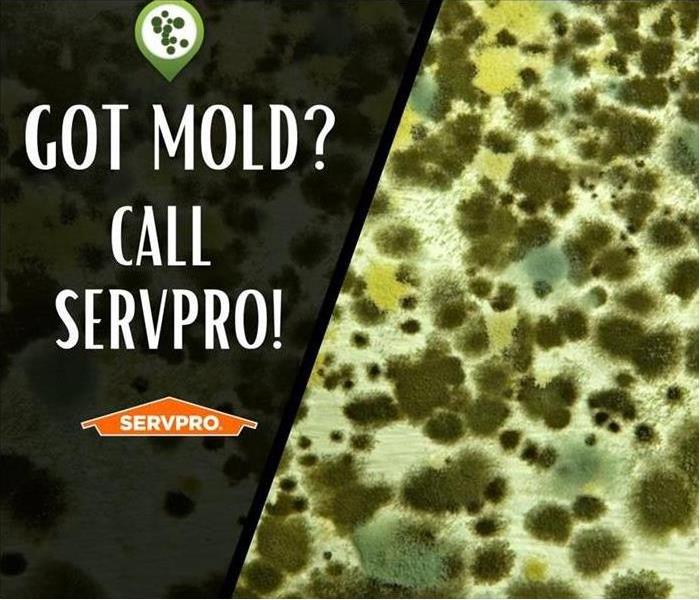 SERVPRO of Jefferson City is here to help with mold damage and remediation
SERVPRO of Jefferson City is here to help with mold damage and remediation
Mold is a common and potentially problematic issue that can affect homes and buildings. Its presence not only poses risks to the structure but can also have adverse effects on the health of those living or working within the space. To effectively combat mold, it is crucial to understand the various ways it can form in different environments.
1. Excess Moisture
Mold thrives in damp and humid conditions, making excess moisture the primary factor in mold formation. Several scenarios contribute to elevated humidity levels:
a. Leaky Roofs and Windows:
- Leaks in roofs or around windows allow water to seep into the structure, creating an ideal environment for mold growth.
b. Poor Ventilation:
- Inadequate ventilation can lead to stagnant air, allowing moisture to accumulate and mold to develop.
c. Plumbing Issues:
- Leaky pipes, whether hidden or visible, can introduce water into walls, floors, and ceilings, providing a breeding ground for mold.
d. Basement Dampness:
- Basements are prone to dampness, especially if they are not properly waterproofed. This can lead to mold formation on walls and floors.
2. Floods and Water Damage
Homes and buildings that have experienced flooding or significant water damage are at an increased risk of mold formation. The prolonged presence of moisture following a flood creates conditions conducive to mold growth. Quick and thorough drying is essential in such situations.
3. Condensation
Condensation occurs when warm, moist air comes into contact with a cold surface, leading to the formation of water droplets. Areas prone to condensation include:
a. Windows:
- Condensation on windows can create an environment where mold can thrive on window sills and frames.
b. Cold Walls:
- Exterior walls that are not properly insulated can attract condensation, fostering mold growth.
c. Cold Water Pipes:
- Pipes carrying cold water can accumulate condensation, potentially leading to hidden mold growth.
4. High Humidity
Regions with naturally high humidity levels are more susceptible to mold problems. Coastal areas or places with tropical climates often face challenges in maintaining low humidity, making them prone to mold-related issues.
5. Improperly Sealed Buildings
Buildings that are not properly sealed are more susceptible to external moisture infiltration. This can happen through gaps in walls, roofs, or windows, providing an entry point for water and creating an environment conducive to mold formation.
6. Damp Construction Materials
During construction or remodeling, if building materials are exposed to rain or high humidity and are not adequately dried before installation, they can harbor mold. This hidden mold can later become a problem as the building ages.
7. Airborne Mold Spores
Mold spores are naturally present in the air both indoors and outdoors. While they are usually harmless in low concentrations, when provided with the right conditions, these spores can settle and multiply, leading to mold infestation.
8. Household Activities
Certain household activities can inadvertently contribute to mold growth:
a. Drying Clothes Indoors:
- Hanging wet clothes to dry indoors can introduce excess moisture into the air.
b. Cooking without Proper Ventilation:
- Cooking, especially boiling or frying, releases moisture into the air. Without proper ventilation, this can lead to mold problems.
c. Indoor Plants:
- Overwatering indoor plants can increase humidity levels, creating an environment favorable to mold.
Preventing and Addressing Mold Issues:
Understanding the various causes of mold formation is crucial, but so is taking preventive measures and addressing existing problems promptly. Here are some preventive steps and solutions:
a. Maintain Proper Ventilation:
- Ensure that your home or building is adequately ventilated to prevent the accumulation of stagnant air and moisture.
b. Address Leaks Promptly:
- Repair any leaks in the roof, windows, or plumbing as soon as they are identified.
c. Use Dehumidifiers:
- Employ dehumidifiers in areas prone to high humidity, such as basements or bathrooms.
d. Improve Insulation:
- Properly insulate walls and windows to reduce the likelihood of condensation.
e. Regular Maintenance:
- Conduct regular inspections of the building, checking for leaks, and ensuring proper drainage.
f. Promptly Address Water Damage:
- If your home has experienced flooding or water damage, take immediate steps to dry and sanitize the affected areas.
g. Control Indoor Humidity:
- Maintain indoor humidity levels between 30-50% to discourage mold growth.
h. Properly Seal Buildings:
- Ensure that the building is properly sealed to prevent water infiltration.
i. Use Mold-Resistant Products:
- Consider using mold-resistant building materials, especially in areas prone to dampness.
j. Professional Mold Remediation:
Conclusion: Vigilance and Proactivity are Key
Mold formation can result from a combination of factors, making it essential to remain vigilant and proactive in preventing and addressing potential issues. By understanding the diverse causes of mold growth, individuals can take steps to create an environment that is inhospitable to mold, ensuring the health and longevity of their homes and buildings. If mold damage becomes an issue, don’t hesitate to call the remediation professionals at SERVPRO of Jefferson City.
How to Deal With Frozen Pipes in Winter Weather | SERVPRO of Jefferson City
1/31/2024 (Permalink)
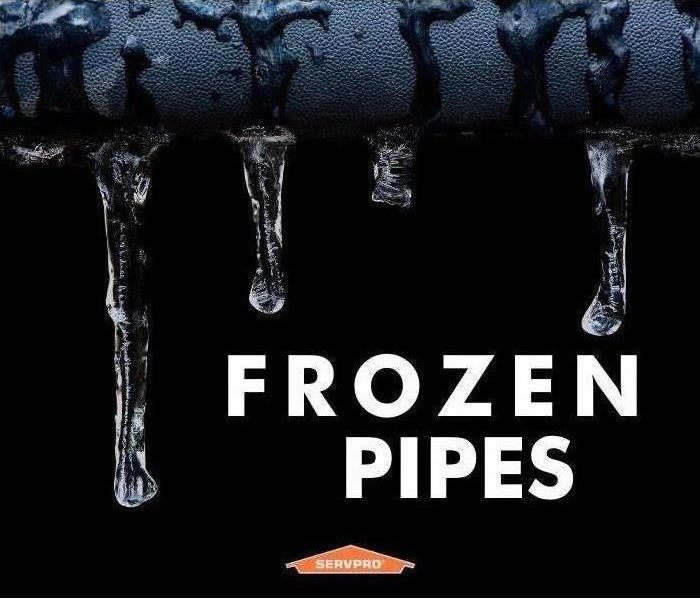 Frozen pipes? Call SERVPRO of Jefferson City
Frozen pipes? Call SERVPRO of Jefferson City
At SERVPRO of Jefferson City, we often see an increase in water losses during the winter. A major culprit of these losses are frozen pipes.
When the water inside the pipes freeze, its molecules expand, which causes a blockage of ice that prevents unfrozen water from passing through. When the frozen pipe begins to thaw, the pressure from the water can cause the pipe to burst.
How Can I Tell My Pipes Are Frozen?
One of the most common signs that you are dealing with frozen pipes is when you turn on your faucet and no water comes out (similarly, if you flush your toilet and it doesn’t refill). If this happens, you should check your water source to make sure it’s still turned on and that a leak isn’t occurring.
Another tell-tale sign of frozen pipes is when your water line is coated in frost or is bulging.
If you know that your pipes are frozen, you can either choose to address the issue yourself or call in professionals.
How to Prevent Frozen Pipes
Frozen pipes cause an estimated $400-$500 million in damage annually. To avoid adding to that total, there are several steps you can take.
When the weather gets cold, you should drain water from pipes that are likely to freeze, such as sprinkler and swimming pool water supply lines. Outside hoses should also be disconnected and drained, and indoor valves supplying these access points must be closed.
On frigid days, let your faucets drip cold water. Having the water drip out will make it harder for the water in the pipes to freeze. Your thermostat should also be kept around the same temperature at all times, and your house temperature should never fall below 55 degrees. Garage doors should also be kept shut to protect water lines.
If you are worried about your pipes freezing, you can also place a 60-watt bulb in the areas you’re concerned with. Just make sure none of the materials near the bulb are combustible.
What If My Pipes Are Already Frozen?
If you realize your pipes have frozen, the first step is to keep your faucet open. This will help with thawing and allow for moving water to flow through the pipe.
You can also apply heat to the specific area of the pipe that is frozen. You can do this by wrapping an electronic heating pad around the pipe or heating the area with a hair dryer. Using towels soaked in hot water can help, too.
Keep applying heat until water flow returns to normal. After the pipe has been thawed, turn on other faucets around the house to make sure you don’t have any more frozen pipes.
If the pipe is inside an exterior wall, you should immediately call a professional contractor. It is likely that a hole will need to be cut in the wall toward the inside of the house to allow the pipes to be exposed to warmer air.
Frozen pipes can be a catastrophic problem for your home, but taking proactive measures can help you address the problem before it even starts.
The SERVPRO Standard | SERVPRO of Jefferson City
1/2/2024 (Permalink)
 SERVPRO of Jefferson City is the restoration company you can depend on
SERVPRO of Jefferson City is the restoration company you can depend on
What makes SERVPRO of Jefferson City stand above other restoration companies?
1. Extensive Network and Prompt Response:
SERVPRO's widespread network of franchises is a key factor that sets us apart from our competitors. With locations across North America, SERVPRO can respond swiftly to emergencies, ensuring that help is readily available. This extensive coverage gives clients the confidence that they can rely on SERVPRO no matter where they are, a distinct advantage over restoration companies with more limited reach.
2. Technological Innovation:
SERVPRO's commitment to staying at the forefront of technology and innovation in the restoration industry is a significant competitive edge. The company consistently invests in state-of-the-art equipment and cutting-edge techniques, enabling us to handle restoration projects efficiently and effectively. This dedication to technological advancement positions SERVPRO as a leader in the industry, capable of delivering results that surpass client expectations.
3. Highly Trained and Certified Professionals:
The emphasis on continuous training and education for SERVPRO technicians is a testament to the company's commitment to expertise. The restoration industry is dynamic, with evolving standards and best practices. SERVPRO's highly trained and IICRC certified professionals are equipped with the knowledge and skills to navigate these changes seamlessly. Clients can trust that their restoration projects are in capable hands, with technicians who prioritize precision and excellence.
4. Comprehensive Range of Services:
SERVPRO's versatility in offering a comprehensive range of services distinguishes it as a one-stop solution for restoration needs. Whether facing water damage, storm damage fire damage, mold remediation, commercial restoration, general cleaning, or other issues, clients can rely on SERVPRO of Jefferson City to provide expert solutions. This breadth of services simplifies the restoration process for clients, eliminating the need to coordinate with multiple companies for different aspects of a project.
5. 24/7 Emergency Response:
Disasters don't adhere to regular business hours, and we recognize the urgency of addressing restoration needs promptly. With a 24/7 emergency response service, clients can reach out to us at any time, ensuring that help is just a phone call away. This commitment to round-the-clock availability showcases SERVPRO' of Jefferson City's dedication to being there for clients when they need assistance the most.
6. Restore Rather Than Replace Philosophy:
SERVPRO employs a "restore rather than replace" philosophy, demonstrating a commitment to both cost-effectiveness and environmental responsibility. By prioritizing restoration, waste is minimized and the environmental impact is reduced. This approach not only appeals to clients looking for sustainable solutions but also contributes to SERVPRO's reputation as a socially responsible company.
7. Stellar Reputation:
A stellar reputation is a valuable asset in any industry, and we have earned the trust of countless clients over the years. Positive reviews, testimonials, and word-of-mouth recommendations contribute to our standing as a reputable and reliable choice in the restoration industry. Our strong reputation instills confidence in potential clients, assuring them of the quality of service they can expect from us.
8. Transparent Communication:
Effective communication is a cornerstone of client satisfaction, and SERVPRO of Jefferson City excels in keeping clients informed throughout the restoration process. From initial assessment to project completion, clients are provided with clear and transparent communication. This open dialogue ensures that clients have a thorough understanding of the work being done and allows for any questions or concerns to be addressed promptly.
9. Strategic Insurance Partnerships:
SERVPRO's strategic partnerships with major insurance companies streamline the restoration process for clients dealing with insurance claims. We understand the complexities of the claims process and collaborates closely with insurers to expedite the resolution. This level of cooperation not only reduces the burden on clients but also sets SERVPRO apart by providing a seamless and hassle-free experience during what can already be a stressful time.
In conclusion, our advantage over other restoration companies lies in our extensive network, technological innovation, highly trained professionals, comprehensive services, 24/7 emergency response, restore rather than replace philosophy, stellar reputation, transparent communication, and strategic insurance partnerships. Collectively, these factors position us as the standout choice for individuals and businesses seeking top-notch restoration services in the Jefferson City, Missouri area.






 24/7 Emergency Service
24/7 Emergency Service









